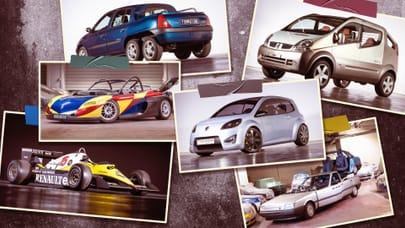

Peel back all the New York glitz, glam and double agents, and it turns out the all-new Range Rover Sport boasts a pretty damn impressive set of statistics in its own right. Here are the figures you really need to know...
420kg - Weight saving of the new RRS over the previous-generation V6 diesel. The new version weighs just 2115kg
Advertisement - Page continues below
500 - Number of times, per second, the Sport's adaptive dynamics system monitors and responds to its sensor readings

22 inches - Size of the biggest alloys available. The smallest wheels are not-so-modest 19-inchers
Advertisement - Page continues below
100% - Amount of torque the RRS's two-speed transfer box can throw to either front or rear wheels, depending on grip available

546mm - Axle articulation, against 373mm for the Audi Q7

50mm - More ground clearance than last-gen RRS, thanks to new height-adjustment system

850mm - Wading depth. Sensors on the wing mirrors warn the driver when the water's getting too deep
Advertisement - Page continues below
92*C - Temperature range encountered in RRS's development phase. The car was tested in conditions ranging from -42*C to 50*C

4.9 seconds - 0-60mph time of range-topping 500bhp V8 RRS, making it the quickest-accelerating Range Rover in history
Advertisement - Page continues below
67dB - Road noise reaching the cabin at 30kmh on a rough track, compared to 70dB in the Porsche Cayenne

60% - More sustainable materials than in the last RRS. The new car is 85 per cent recyclable

6% - More aerodynamic than last RRS, thanks in part to more steeply raked front screen

1700 watts - Output of the Sport's top-spec 'Signature' audio system, which includes 23 speakers. That's a lot of speakers

28% - Increased body stiffness over last RRS, thanks to new all-aluminium structure

4 - Number of cylinders in upcoming entry-level diesel, which will be the first four-cylinder in the RRS's history when it arrives later this year
Trending this week
- Car Review
Ferrari Amalfi







